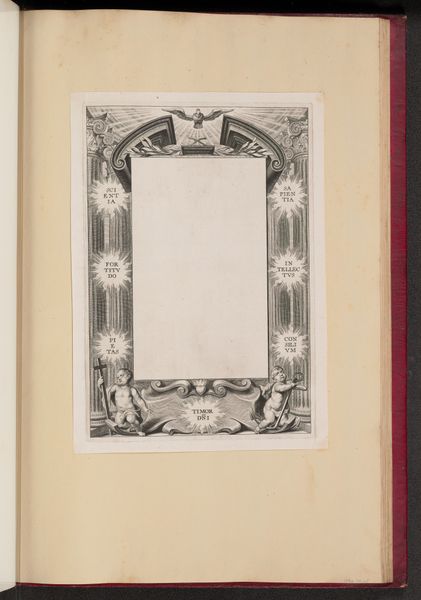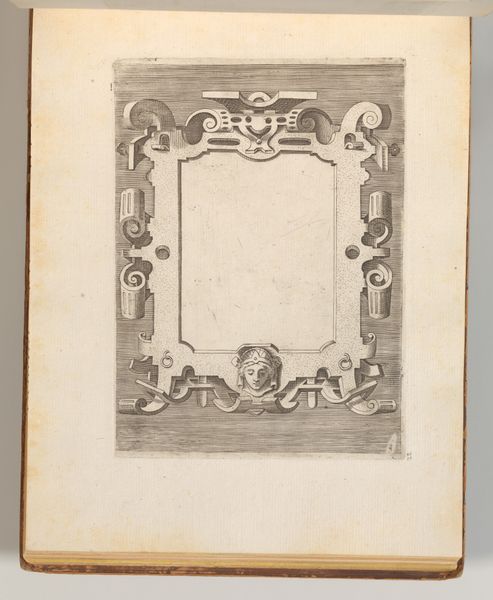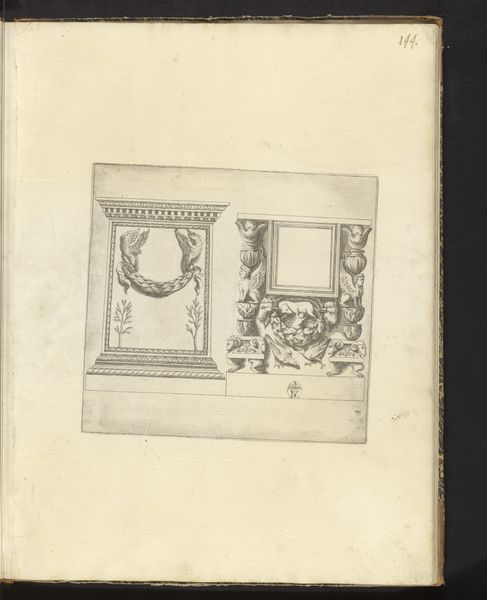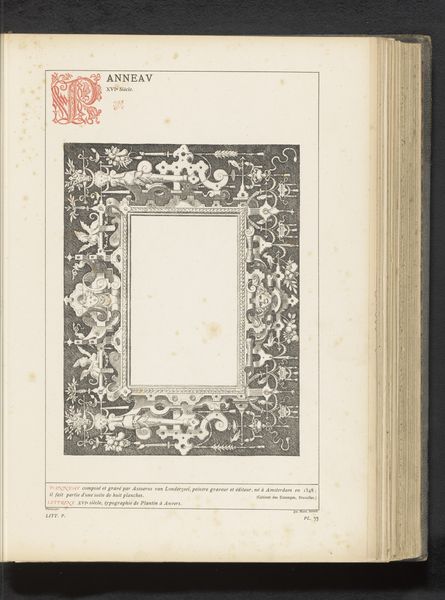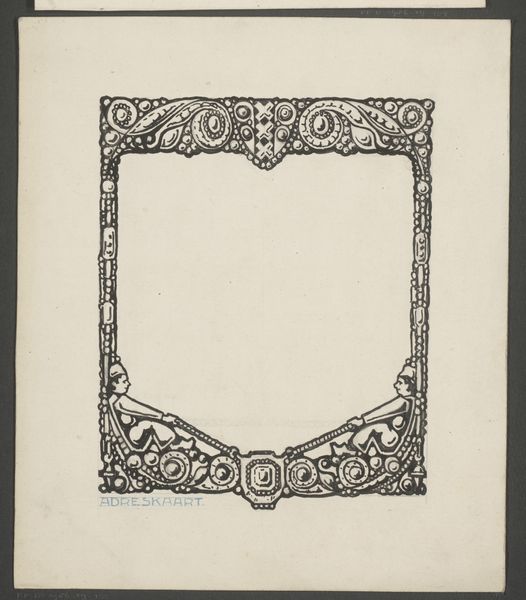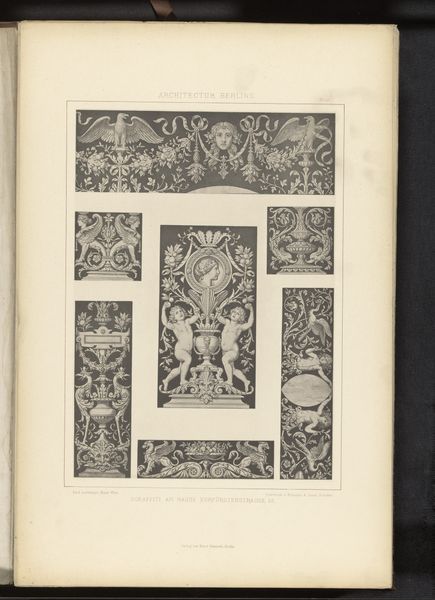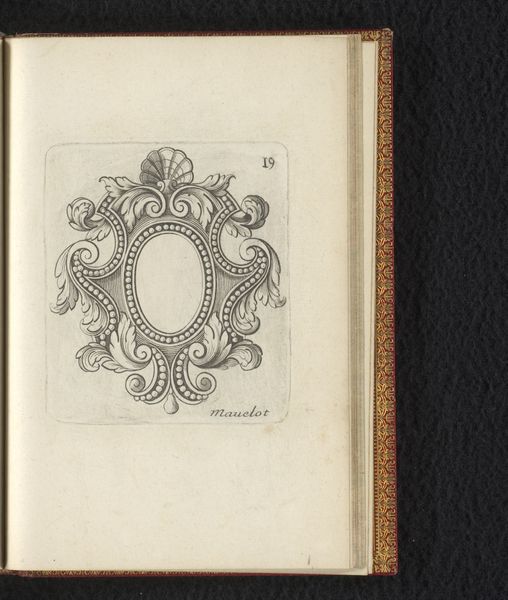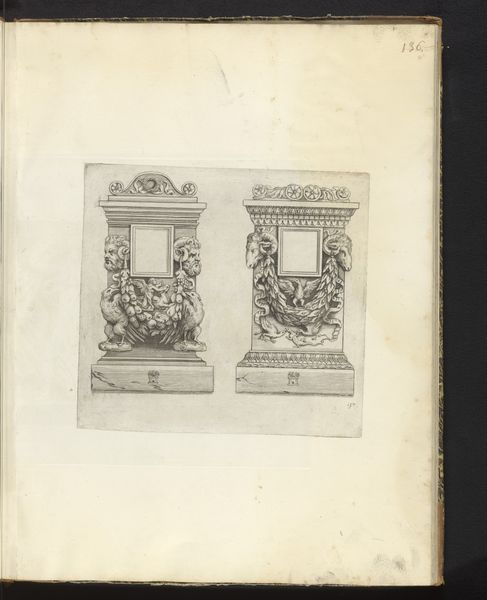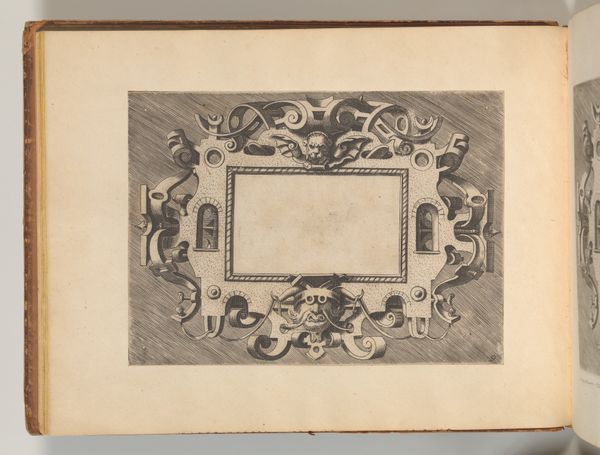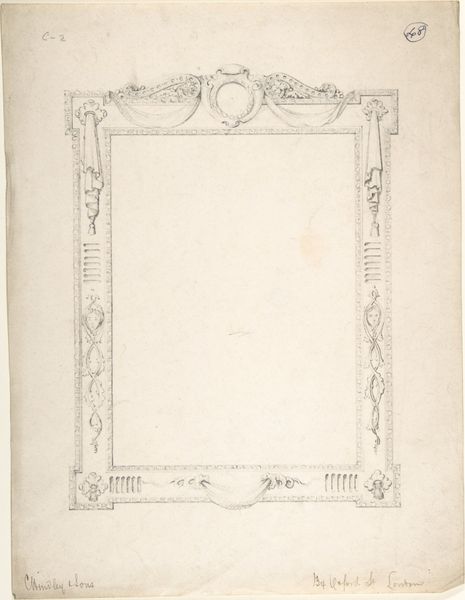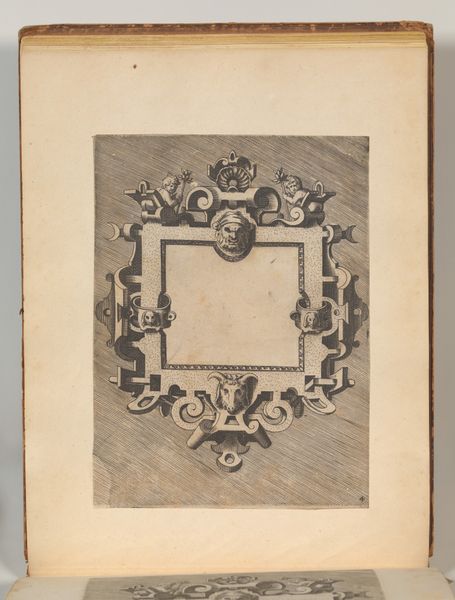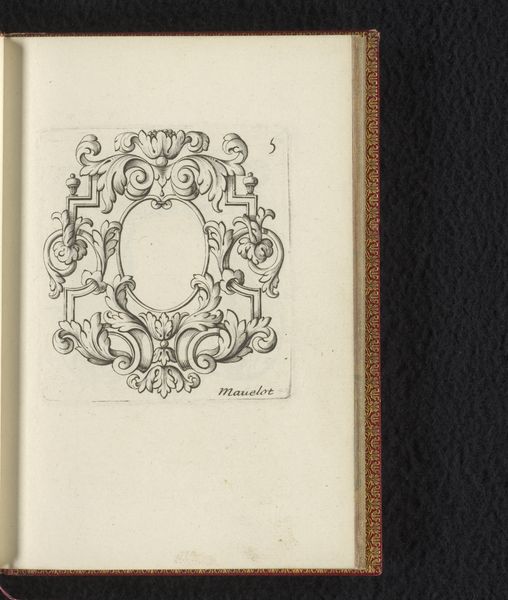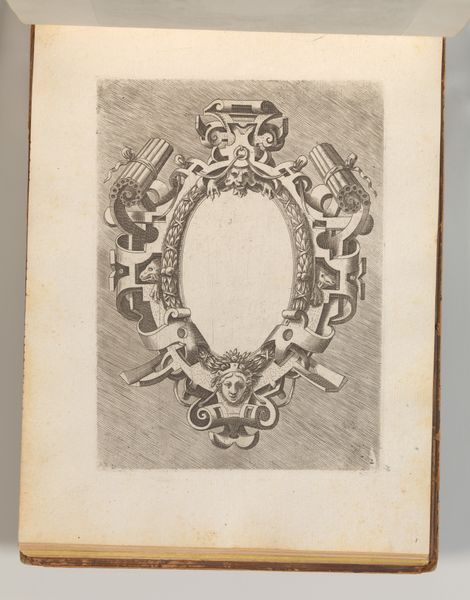
print, engraving
#
baroque
# print
#
figuration
#
form
#
engraving
Copyright: National Gallery of Art: CC0 1.0
Curator: This is "Border Illustration with Two Putti and Fruit," an engraving by Cornelis Galle I, created sometime between 1613 and 1646. It embodies a distinct Baroque flair. Editor: Oh, how whimsical! It's like stumbling upon a cherubic fortress guarding a secret garden gate. The ornamentation is beautifully intense and elaborate! Curator: Galle's print relies heavily on figuration. Considering the Baroque period's reliance on ornate designs, the labor involved must have been extensive, engraving intricate detail upon the copperplate to then allow for printed editions. I wonder about its accessibility and if such an object would circulate in popular or elevated circles. Editor: Yes, and those little putti! They look simultaneously grumpy and adorable—totally Baroque! This work certainly brings up questions. I am fascinated with those little ribbons draped along the bottom of the engraving. Curator: Galle employs the classical visual language of putti, but it also highlights the expanding global access to trade given the symbolic presence of fruit motifs like citrus. The question is less what is represented and more the networks and consumption made possible during this period that led Galle to imagine his subjects in such a material context. Editor: Absolutely. Plus, seeing this image detached from its book context shifts its meaning. I get a very decorative vibe, maybe as a frame for text, or…dare I say, a fancy label for a particularly divine jam? Curator: An interesting application of baroque design sensibilities, if only this particular edition could reveal such history about its previous use! However, our period context clues certainly remind us about evolving social systems around early book-making practices and baroque patterns of trade. Editor: I see your point completely! Overall, I will say that examining such detail has awakened my inner craftsperson, to be honest! Curator: I, too, walk away appreciating the relationship between symbolic expression and our global systems of trade, especially now!
Comments
No comments
Be the first to comment and join the conversation on the ultimate creative platform.
